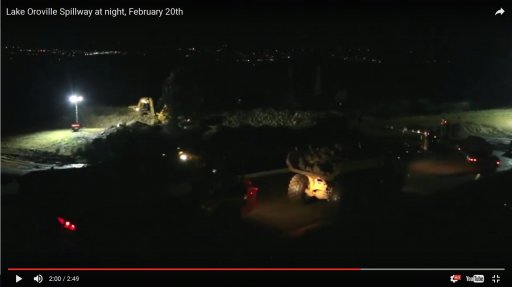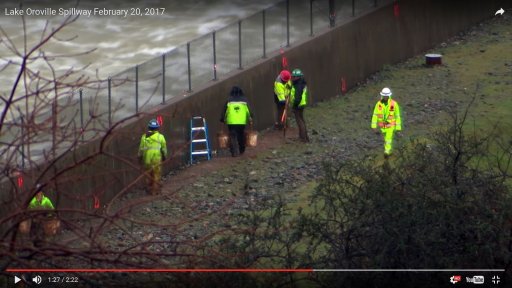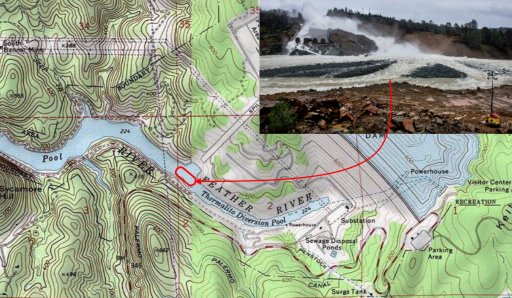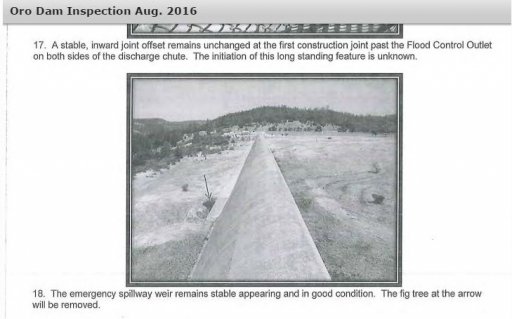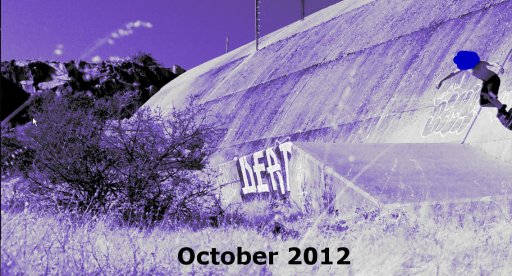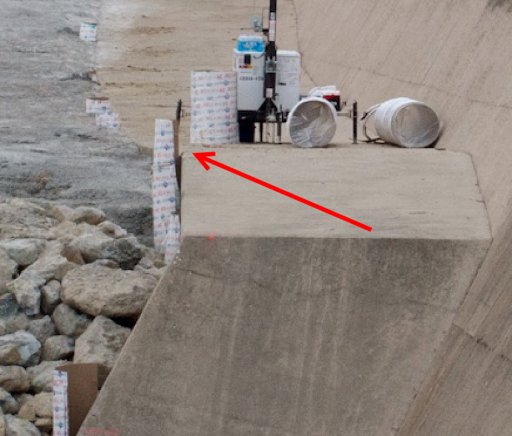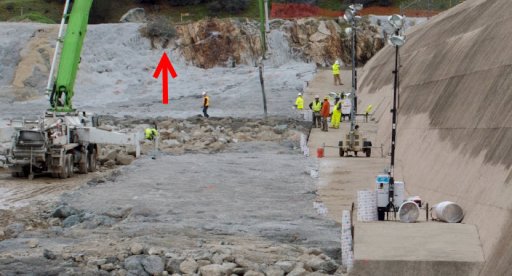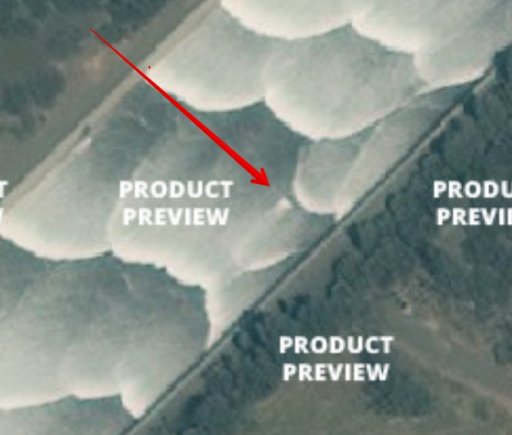Yes, I have been following that thread and in the lower section, I would agree with you. However, in the upper section it appears that the fence has poles more frequently (perhaps due to the risk of junk coming through the gates, or idiots trying to go over it?).The spacing between the fence posts on the spillway sidewalls is actually 10' between posts.
There is an entire parallel thread looking at these details.
EDIT
added the link to the thread
https://www.metabunk.org/oroville-dam-drains-in-the-spillway-walls-how-do-they-work.t8407/
Here is an annotated version of the picture you posted showing the workers on the spillway (from
http://pixel-ca-dwr.photoshelter.co...Ip7IY/KG-oroville-damage-13013-02-20-2017-jpg originally) I made a box the same height as the workers (for boxes 1 and 2) and the same height as the fence (box 3) then I copied the boxes and rotated them to match the angle of the fence posts:
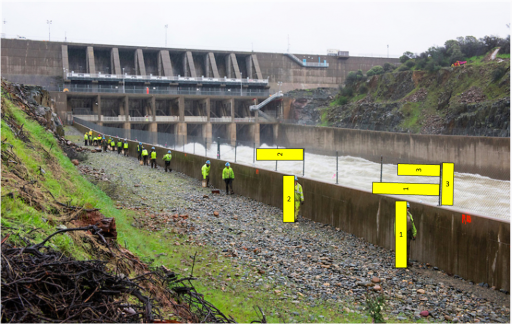
The distance is not going to match due to the perspective, but if the fence is 3-4' tall and the workers are 5'-6' tall, the posts are not 10' apart in THIS section (it looks like it may change spacing at the R10 mark).
If you look at the other pictures from today, they show the same spacing.
Here is one that you included that shows the close spacing of the posts hear the gates:
Here is another from the Pixle site showing a closeup of the fence where it appears that you can see the spacing change (I put a red line at each post):
Source: http://cdn.c.photoshelter.com/img-g...flwefms2040ed20170224o4_MQ.LCnWXvT5Y/fit=1040
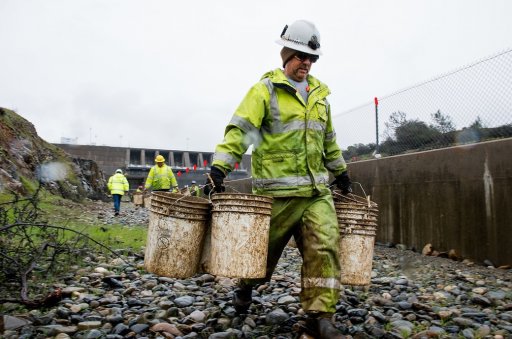
Aaron Z

